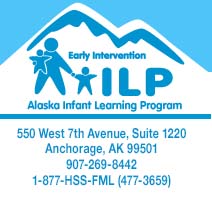
Safety Checklist: 1 - 3 Years
Safety issues at this age are related to the increasing mobility and curiosity of the child. Children at this age enjoy exploring their environment, putting object in their mouths, and they can be fearless. Their speed of mobility is increasing so even a split second of inattention in an unsafe area can lead to an injury.
Safety hints at this age include:
- All medicines and poisonous substances should be locked and out of reach of children;
- All small objects, plastic bags and balloons, which can cause choking, should be inaccessible;
- All sharp objects such as knives or scissors should be inaccessible;
- All electrical outlets should be covered;
- Syrup of Ipecac, which promotes vomiting, should be available as well as a number of your local poison control center;
- Children should be supervised near all pools, tubs or high places. Drowning can occur even in a bucket of water or toilet bowl;
- All pools or hot tubs should have fences on all four sides;
- A toddler can pull dangling electric cords, blinds or tablecloths. These should be placed in such a position as to avoid this from happening;
- All furniture such as dressers or chests of drawers should be securely latched to the wall to prevent being pulled on top of a child. Many children will pull out drawers and try to climb on a chest of drawers only to have it tip over and fall on them;
- All curling irons, irons, hot liquids and other objects should be unreachable;
- Sunscreen of at least 15 SPF should be used for outdoor activities;
- Insect repellent containing up to 10% DEET should be used in places where insects are prevalent. Children should be checked for tick attachments if they live in an area of tick settlements;
- Car seats should be used for all car trips and the car seat should be in the back seat facing backwards until at least one year of age and twenty pounds after which they can be in the back seat facing forward. The Auto Safety Hotline number is 1-888-327-4236;
- Infant walkers should never be used since many children sustain serious injuries with these. These infant walkers also inhibit normal walking;
- Extension cords should have electric tape wrapped around the junctions;
- Parents should know CPR (Cardiopulmonary resuscitation). Call the American Heart Association at 1-800-242-8721 for information;
- Safety gates should be placed at the top and bottom of all staircases;
- Windows should be closed and locked or guarded. Screens are not enough to prevent a child from falling through a window;
- Guns should be safely stored and locked;
- The water heater should be 120 degrees Fahrenheit (50.0 degrees Celsius) or less;
- All cooking pots and pans should be on the back burner with the handles facing the back;
- Do not store poisons in drinking bottles, glasses or jars;
- Outdoor play should be closely monitored;
- Children should not be in the yard during lawn mowing as the blade can throw objects. Also, ride-on mowers should not be used as a recreational vehicle;
- Children should not be placed on a bicycle. Instead, they should be pulled in a carrier. They should wear a helmet at all times;
- Store toys in a chest without a dropping lid to avoid harming the fingers;
- Everyone on a boat should use a coast guard approved life jacket. At least one adult swimmer should be present for each child who cannot swim;
- All houses should have a smoke detector, fire extinguisher and fire escape plan;
- Install only garage door openers with sensors so they will not close on a child;
- All baby sitters should be at least 13 years of age, mature enough to handle emergencies, and known and trusted by the parents;
- All of these safety precautions should be present in any home, daycare, preschool, mother's day out, friend or family location;
- Watch children near traffic as children frequently will start to walk or run into the street at this age;
- All medicines should have safety caps.
